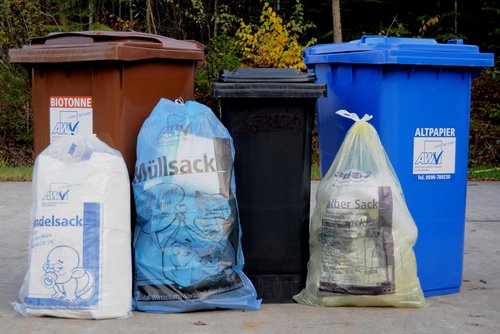Recyclable material collection on behalf of the AWV
Against the background of climate protection, energy and the discussion about future organisation of recyclable material collection held during the course of the amendment of the German Recycling Management Act, on behalf of the waste industry association of Northern Swabia ("Abfall-Wirtschafts- Verband Nordschwaben" - AWV), bifa assessed the ecoefficiency of its offering. bifa especially focussed on the biowaste collection and recovery arrangements.
The following methods were used successfully in the project:
- Ecoefficiency analysis: environment-related and economic assessment of the current disposal offering with the help of bifa's established methodology of ecoefficiency analysis as well as
- Discussion of potential: for the most relevant waste streams from the view of ecoefficiency.
The results are clear:
The ecoefficiency analysis of AWV's disposal structure carried out by bifa did not disclose any significant weak points.
The well developed disposal structure nonetheless offers AWV the opportunity to work on optimising the ecoefficiency of its disposal offer. The ecoefficiency analysis shows that waste streams for disposal, such as household and bulky household waste, are linked to high costs and comparatively low environmental relief. On the other hand, material or energy recovery of separately collected recyclable materials enables high environmental relief for low costs or even revenue.
Against this background, the success of the differentiated and well developed collection systems of the AWV becomes clear. The large quantities of paper/paperboard/cardboard, biowaste and light packaging collected per resident in conjunction with differentiated recycling depots reduce the quantity of household waste and enable recyclable materials to be provided for recovery.
The collection of biowaste and green gardening waste in the AWV is well developed in terms of the quantities collected. The fermentation of biowastes simultaneously uses the energy content, the organic substance and fertiliser nutrients of the wastes. Biowaste fermentation is linked to similar environmental relief in the contracted plants.
Starting from the current disposal structure, AWV is working on improving the ecoefficiency of its disposal offer. In order to be able to exert more influence on the environmental success of disposal in the future, AWV is applying different methods and plans to take into account environmental criteria in the tendering of disposal services.
Together with bifa a set of criteria for assessing the collection and transport of waste was drawn up and implemented in tenders. In future, ecological criteria could also help to promote even more ecoefficient recovery in the tendering of domestic waste and biowaste disposal. With regard to discussion of the prospects of uniform recyclable material collection, a domestic waste analysis will show the prospects of AWV.
![[Translate to Englisch:] Placeholder](/fileadmin/_processed_/e/b/csm_Header_Projekte_603d83e502.jpg)
